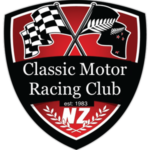The Snoop suggested an article on the Silvester Chevy Coupe. A quick look uncovered many more racing Coupes, so the story will be a bit bigger. In the meantime, to get the ball rolling, here is a potted history of the Chevrolet 6.

Introduced in 1928 these engines are affectionately known either as “Stovebolt” or “Blue Flame”. The first moniker came about as the early versions used fasteners that looked like the bolts that held cast iron kitchen ranges together. The second in 1930’s advertising for later versions. The combustion flame on these engines was said to be blue, rather than yellow, indicating more efficient burning. In the mid 50’s “blue flame” became an official factory designation for some of the higher performance versions. This was a long lived engine family, introduced in 1928 and pegging out in1962.
Straight sixes were all the rage in the late 20’s. Chevrolet was the budget item in the GM pantheon, but this didn’t prevent their engineers taking an interest in a six cylinder design for Pontiac. A little work with their slide rules showed that they could build one of their own for little more than the cost of their then current fours. In 1928 they did just that, swapping their entire model line to the new engine. This was a 3.2 litre (194 cubic inch) six built to budget with an eye to easy field repairs. The “budget” nature of the design lead to a major drawback for anyone contemplating using it as a competition engine. It retained the white metal crankshaft bearings of its 4 cylinder predecessors, with a low pressure oil pump feeding the mains, and troughs through which the big ends plowed to pick up their lubricant. Even when shell bearings and pressure lubrication became commonplace the blue flame continued with its “dipper” lubrication system.

(Your editor has cause to thank this simple system, having once repaired a run bearing in a 4 cylinder Chevy on the side of the road with little more than a socket set and a screw driver. Off with the offending cap, out with a shim or two above the cap, a quick scrape and clean of the bearing babbit, bolt her back up and carry on. If this sounds crude it was, but it also allowed for quick and easy factory assembly. White metal placement was never consistent. The shims were there to match every bearing, as found on the assembly bench, to every crank journal, also as found).
It wasn’t very long before these strong and durable engines found their way over the Atlantic, enabling Bedford to move into the medium size lorry market in 1935, and Austin to do the same just a little later. An underhand piece of industrial espionage? Not at all. The British Army needed trucks and needed them fast. What it didn’t need was a lot of spare parts for a bunch of different makes and models chasing along wherever the army went. Ex Rolls Royce engineer Maurice Olley (look him up we owe him much) was
working for GM at the time as well as being the war materials procurement officer for the Poms in the USA. The Austin deal was made out of necessity, but GM and Austin were already well acquainted, GM having courted Austin before they took over Vauxhall in 1925.

By the time of the 1943 landings in North Africa the Poms and the Yanks were both using the same running gear in their trucks, no matter where they were made (Canada, England or USA) and no matter what they were badged as (Chevrolet, GMC, Bedford or Austin). And if you ran out of your own spares you could always scavenge what you needed from any abandoned Africa Corp Opel truck. GM had became the sole shareholder in Opel in 1931. When pressure was put on them to move Opel to munitions manufacture GM declined, and walked away acknowledging, “with some regret, that Mr Hitler is the boss of our German factory”. The engine production line for the Opel Admiral car was left behind, it made a metricated Blue Flame.
The military versions had proper bottom ends and provided the basis for the later hot rod and road race conversions. The GMC engine is an adapted Chevy. The Austin version lived on in the Sheerline and Princess, with a four cylinder version powering the A90 and the Austin Healey. The Chevrolet original found its way into the first Corvettes in 1953, Olley designed the chassis and suspension for it.
The “Stovebolt” began life in 1928 at 3.2 litres and 50 HP. Forty years later the hot rodders were tricking out a 5 litre GMC version and making 400. (Google “Stovebolt Storm” to find a couple of Rod and Custom articles by Tex Smith on how that was done).
There were straight 6 cylinder Chevy engines after 1962, but these were neither Blue Flame nor Stovebolt. Essentially they were 6 cylinder versions of the small block V8. And, returning us to our start point, they had a companion 4 as well.
